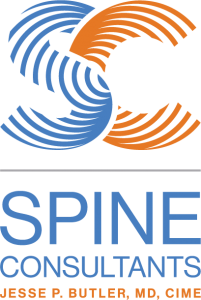Degenerative disc disease is a condition that affects many people at some point in their lives. It’s not a dangerous condition, but it can be very painful and debilitating if untreated. Fortunately, there are treatment options out there that can help manage the symptoms associated with degenerative disc disease and restore an individual’s ability to function.
Overview of Degenerative Disc Disease
Degenerative disc disease is a condition in which pain is caused by damage to the discs between the vertebrae of the spine. It’s sometimes called spondylosis when it occurs in the neck or lower back portions of the spine, respectively.
The bones (vertebrae) of your spine are cushioned by small, spongy discs. The discs are made up of a soft center encased in a tough exterior and act as cushions for your vertebrae. They allow you to bend, extend, and twist your spine, as well as absorb shock.
As we age, these discs begin to dry out and shrink in size, which causes them to lose some of their ability to cushion and absorb shock. Furthermore, losing water decreases the cushion between your vertebrae, which can lead to additional spine issues.
Any tears close to the nerves can be uncomfortable as a result of everyday movements and slight traumas. Cracks in the wall may let the disk’s core through. A slipped or herniated disk bulges or slips out of place, compressing nearby nerves.
What Are the Symptoms of Degenerative Disc Disease?
Recurring pain is one symptom of degenerative disc disease. It can be mild or severe and it can last only a few days to several months. You may experience pain in several ways including:
- Back pain, especially after prolonged sitting or standing
- Pain that worsens with bending, lifting, twisting, or other types of movement
- Pain in the buttocks or legs that improves when you lie down
- Tingling or numbness in your arms, legs, or feet
- Muscle weakness in one or both legs
How Does The Doctor Diagnose Degenerative Disc Disease?
Diagnosing degenerative disc disease begins with a medical history and physical examination. Your doctor will ask questions about your symptoms, such as when they started, how long they last, and how often they occur. This information can help your doctor determine the cause of your symptoms.
During the physical examination, your doctor will try to find out if you have pain in areas of your back or neck where degenerative disc disease is likely to be a problem. The doctor can ask you to walk and bend to see if these movements cause pain. X-rays or MRIs may also be used to check for damage to bones or nerves near your spine.
Treatment Options for Degenerative Disc Disease
Your doctor will consider your age, health status, activity level, occupation, and other factors when developing a treatment plan for you. Treatment for degenerative disc disease ranges from simple measures, such as rest and use of local heat or cold, to more aggressive methods, such as physical therapy, medications, and surgery.
Your doctor will usually recommend the least invasive treatment first. For example, if you have a herniated disc that’s not causing significant pain or nerve damage, your doctor may recommend taking over-the-counter pain relievers. If pain is severe or doesn’t improve with medications or other treatments, your doctor may recommend surgery.
Treatments to try before considering surgery include:
Physical therapy: Maintaining an active lifestyle can help with back pain. Physical therapy may also be recommended as a conservative, non-surgical treatment for degenerative disc disease. The doctor may suggest you refrain from repetitive activities that put stress on your back – like running on hard surfaces – until your symptoms subside.
Medications: Over-the-counter pain relievers are often effective in treating mild to moderate degenerative disc disease symptoms. A doctor may give you steroid shots in your back, around your spinal cord, or in your nerves or muscles if you suffer from chronic pain.
Surgery: If other non-surgical treatments fail and you still feel chronic pain, your doctor may suggest surgery. A discectomy is a technique that removes the damaged section of the disk. This relieves stress on your nerves.
If necessary, your doctor may remove the entire disc and replace it with a synthetic one. Depending on the severity of your condition, your doctor may fuse the bones in your spine after removing the disc.
Manage Degenerative Disc Disease with Your Doctor
Degenerative disc disease is a common cause of low back pain and sciatica, though it should be noted that many people who have degenerative disc disease never experience these symptoms. Degenerative disc disease can vary from mild to severe, and treatments are often determined by one’s symptoms.
The earlier your doctor diagnoses and treats degenerative disc disease, the better the outcome is, and the lower your chances of developing further serious problems.

